 |
Back
to Frederick Douglass Exhibit
Who was Frederick Douglass?
|
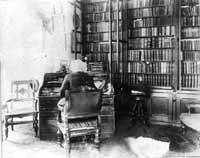
Frederick Douglass
in his library
|
Frederick
Douglass has been called the father of the civil rights
movement. He rose through determination, brilliance, and
eloquence to shape the American nation. He was an abolitionist,
human rights and women's rights activist, orator, author,
journalist, publisher, and social reformer.
|
Committed to freedom, Douglass
dedicated his life to achieving justice for all Americans, in
particular African-Americans, women, and minority groups. He envisioned
America as an inclusive nation strengthened by diversity and free
of discrimination.
| Douglass
served as advisor to presidents. Abraham Lincoln referred
to him as the most meritorious man of the nineteenth century.
In his later years Douglass was appointed to several offices.
He served as U.S. Marshal of the District of Columbia during
Rutherford B. Hayes' administration and President James Garfield
appointed him the District of Columbia Recorder of Deeds.
In 1889 President Benjamin Harrison appointed him to be the
US minister to Haiti. He was later appointed by President
Grant to serve as secretary of the commission of Santo Domingo.
Douglass had hoped that his appointments would open doors
for other African-Americans, but it was many years before
they would follow in his footsteps. |
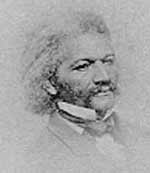
|
Frederick Douglass rose from slavery
to become the leading African-American voice of the nineteenth
century. At an early age, he realized that his ability to read
was the key to freedom. All of his efforts from then on focused
on achieving freedom. As a young man, he came into contact with
black preachers and taught in the Sabbath School in Baltimore.
Here he refined his reading, writing, and speaking skills. At
age twenty, Douglass escaped north to freedom. He settled in New
Bedford, Massachusetts with his wife Anna Murray Douglass and
joined the abolitionist movement.
|
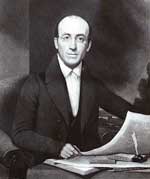
William Lloyd Garrison
|
Frederick
Douglass was a compelling force in the anti-slavery movement.
A man of moral authority, Douglass developed into a charismatic
public speaker. Prominent abolitionist William Lloyd Garrison
recognized his oratory skill and hired him as a speaker for
the Massachusetts Anti-Slavery Society. |
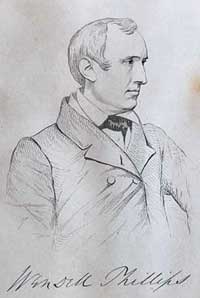
Wendell Phillips
|
Douglass worked with many notable
abolitionists of the nineteenth century including Wendell Phillips
and Abby Kelley. Douglass also had a close relationship with John
Brown and his family but disagreed with Brown's violent tactics,
dramatically displayed in Brown's raid on Harper's Ferry in 1859.
With the abolishment of slavery at the close of the Civil War,
Douglass then turned his attention to the full integration of
the African-American into political and
economic life of the United States.
|
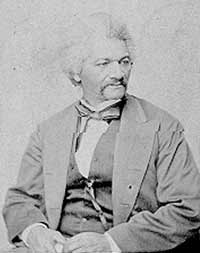
Fredreick Douglass
|
Douglass
established his own weekly abolitionist newspaper, the North
Star, that became a major voice of African-American
opinion. Later, through his periodical titled the Douglass
Monthly, he recruited black Union soldiers for the African-American
Fifty-Fourth Massachusetts Volunteers. His sons Lewis and
Charles both served in this regiment and saw combat.
Douglass worked to retain
the hard-won advances of African-Americans. However, the
progress made during Reconstruction soon eroded as the twentieth
century approached. Douglass spent his last years opposing
lynching and supporting the rights of women. |
The antislavery crusade of the
early nineteenth century served as a training ground for the women's
suffrage movement. Douglass actively supported the women's rights
movement, yet he believed black men should receive suffrage first.
Demonstrating his support for women's rights, Douglass participated
in the first feminist convention at Seneca Falls in July of 1848
where he was largely responsible for passage of the motion to
support female suffrage.
Together with abolitionist and
feminist Elizabeth Cady Stanton, Douglass signed the Declaration
of Sentiments that became the movement's manifesto. His masthead
of his newspaper, the North Star, once read "Right
is of no Sex - Truth is of no Color." A women's rights activist
to the end, Douglass died in February 1895, having just attended
a Woman's Council meeting.
This information was reproduced
from a National Parks Service exhibit and is used with permission. |
 |